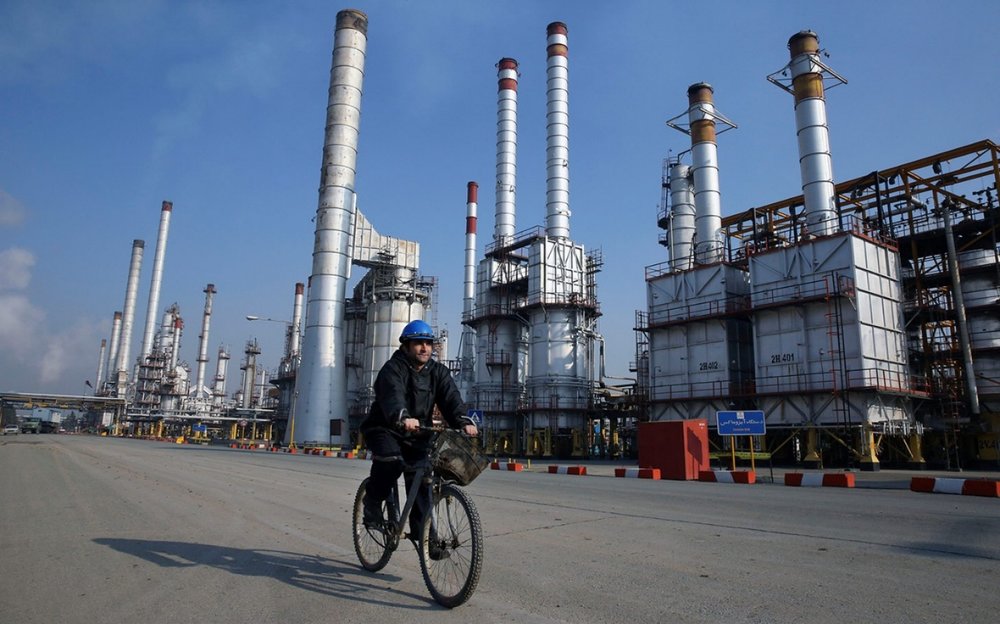Iranian oil industry’s achievements in past year

TEHRAN – The Iranian oil industry witnessed several turning points passing through the previous Iranian calendar year (which ended on March 20), stabilization of the country’s oil output in the range of 4 million barrels per day (bpd), exporting a record 2.6 million barrels of oil and gas condensate per day, and reaching a record high in production from joint fields of South Pars and West Karoun, are among the most important developments in the oil industry during the past year.
A steady production level
Since the beginning of the last fiscal year, National Iranian Oil Company (NIOC) put all its focus on increasing the level of the country’s oil and gas output so that the company put in on the agenda to reach an eight percent growth in crude oil production along with 17 percent rise in gas output and a 29 Percent increase in the production of gas condensate by the yearend.
In doing so, increasing the production from West Karoun oilfields which Iran shares with Iraq at the western part of Iran’s southwestern region of Karoun, and South Pars gas field (shared with Qatar in the Persian Gulf) was considered the oil industry’s top priority to reach the country’s output goals.
Production from five oilfields of West Karoun region, namely North Azadegan, South Azadegan, North Yaran, South Yaran and Yadavaran, reached 305,000 barrels per day (bpd) by the end of the past Iranian calendar year, almost 1.9 times more than that of its preceding year.
According to the Iranian Oil Minister Bijan Namdar Zanganeh the West Karoun oilfields output was 110,000 bpd in the beginning of the past year (March 2017).
According to Iran's Petroleum Engineering and Development Company (PEDEC) production from these fields is planned to reach 1.2 million bpd at the final stage.
Meanwhile, Iran started pumping oil from the oil layer of South Pars gas field in March 2017 and just after two months the first cargo of the layer’s crude oil to the tune of 700,000 barrels was loaded for exports in May.
Some 25,000 barrels of crude was extracted on average from the South Pars oil layer on a daily basis during the past Iranian calendar year.
The country’s total daily production was hovering above 3.8 million barrels per day by the end of the last fiscal year.
Oil exports at near 2.6m bpd
The average daily crude oil export during the last year increased by 60,000 barrels compared to its proceeding year, bringing the total exports of oil and gas condensate to 2.6 million barrels per day at some points.
China, India, South Korea, Japan, Turkey, Italy, Greece, Russia, France, Spain, Romania, Indonesia, Poland and the Netherlands were among the country’s oil buyers last year.
However, due to some maintenance issues and the inauguration of the Persian Gulf Star Gas Refinery, which consumed about 120 million barrels of gas condensate per day, the export of this product diminished accordingly so that the exports decreased in October and the following months.
NIOC is still planning on increasing the condensate output level so that it could supply the domestic needs while keeping the country’s crude exports at a satisfactory level.
Shared fields: pillars of oil industry
In the last few years, especially after the implementation of the nuclear deal (known as the Joint Comprehensive Plan of Actions or JCPOA), Iran’s oil industry has been strongly focused on developing joint oil and gas fields, aiming to increase the seven-percent share of such fields in the country’s oil production.
In this regard, West Karoun fields have been prioritized among the country’s top development projects.
According to the oil ministry’s planning, the region’s oilfields were introduced as the main candidates to go on tender for development based on the country’s new model of oil contracts (known as IPC).
Earlier in March, NIOC Managing Director Ali Kardor announced that three IPC-based deals would get ready for final signing by the end of the last Iranian calendar year (March 20, 2018) so the industry is expected to witness at least three new deals for development of the country’s shared fields.
Meanwhile, Mohammad Meshkinfam, the managing director of Pars Oil and Gas Company (POGC), which is in charge of developing South Pars gas field, announced in March that the daily production of gas from the field is going to increase 56 million cubic meters (mcm) in the current Iranian calendar year (started on March 21, 2018).
According to Gholamreza Manouchehri, the deputy for development and engineering at the NIOC, Iran is currently extracting near 550 million cubic meters per day of gas from the giant South Pars gas field.

Leave a Comment